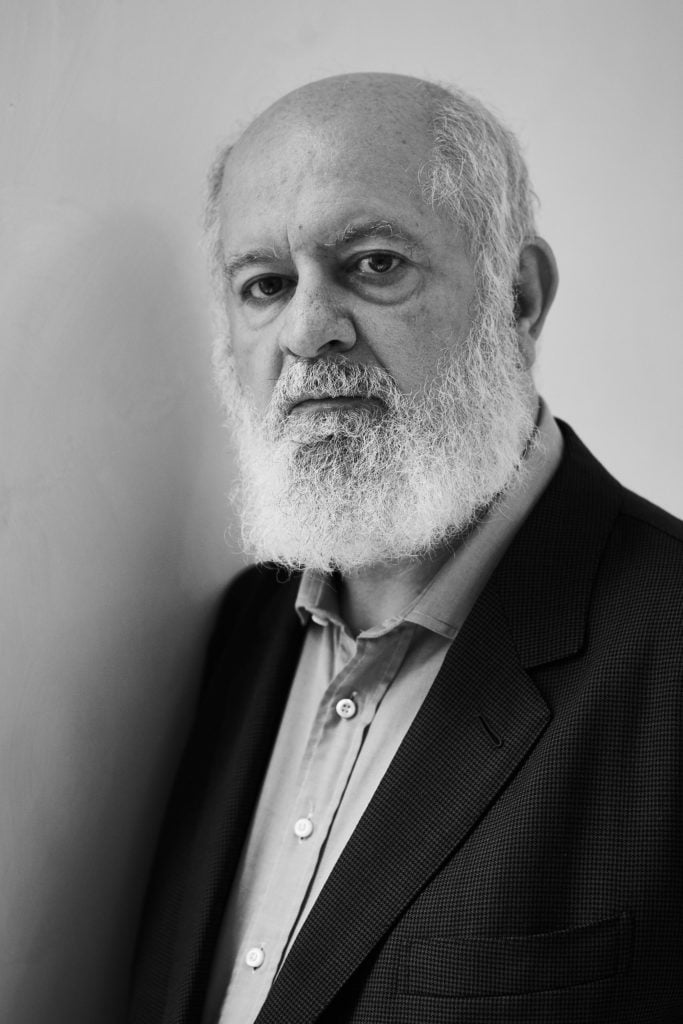‘Standing in Front of an Artwork Cannot Be Substituted’: Veteran Dealer Massimo De Carlo on Slowly, But Eagerly, Reopening His Galleries


Katie White

The past few months have been a time for reflection and retooling for longtime dealer Massimo De Carlo. His eponymous gallery, which he first opened in Milan in 1987, is now a multinational operation, with two locations in Milan, one in London, and another in Hong Kong—cities that happened to have been among the earliest and hardest hit by coronavirus.
Now, De Carlo is beginning to enter the post-lockdown phase. The gallery has reopened its Hong Kong location with a well-received show of work by the artist Lee Kit . One of its Milan flagships has been operating at 50 percent capacity in recent weeks with a show by Japanese artist Tomoo Gokita, and the second is opening up next week, by appointment only, with a show of works by famed Arte Povera artist Giulio Paolini. We spoke to the seasoned gallerist about his thoughts on what’s to come—and why he’s bracing for a more complicated future.

Installation view “Tomoo Gokita: Over” on view at Massimo De Carlo, Milan/Lombardia.
How has the gallery adapted in recent months to the changing quarantine rules and the reopening?
It’s a difficult, complicated time for everybody here and everywhere. I’m watching very closely what’s happening in the United States. In Europe, with one space open in Milan, things are moving more quietly. But in Hong Kong, the reopening a few weeks ago saw a very positive reaction. We didn’t expect so many people—we also had the show augmented by a VR space that provided lots of information and lots of visuals for those who couldn’t be in the physical space. Together, this made the show successful both as a commercial exhibition and as well as for our visitors. This month, we’ll be reopening our second space in Milan with a show of the work of Giulio Paolini and will keep that show open all summer. We’ll have a closing party, instead of an opening one, on September 15. So, you could say, the activity is slowly coming back.

Installation view “Lee Kit: The Gazing Eyes Won’t Lie,” 2020. Courtesy of Massimo De Carlo, Hong Kong.
How have your artists and collectors responded to the changing landscape?
Not all the artists or collectors are responding with making or collecting new works per se. It’s almost like everyone is watching very carefully from the window to decide what the next step will be. The general feeling depends on where you are, I think—our American artists are in a kind of mourning for what is happening in their country. In Hong Kong, however, there is such a feeling of optimism, whereas Italy is somewhere in between. Here in Milan, we have some concerns because some of our laws about social distancing in public are difficult to respect, just given the realities of space.
How do you think the gallery has changed in recent months and how do you think things will be affected going forward?
Everybody wants to work together and give suggestions—let’s do this or let’s do that. We have to be careful not to overwhelm ourselves. Sometimes, less is better. The online area can get overcharged with many different things, so it’s better to really think things through first.
I think 2020 is gone—there’s no hope to get back to an even quasi-normal situation this year. And 2021 will be difficult. This is not something that can be fixed in one week. There needs to be a lot of reflection on the art system and consideration of what is needed and what is not. Every field needs to think about what they need to change. It might be too early to even make those changes, but in the coming months, we need to be ready so we can head in the right direction for 2021.
What role do you envision art occupying in the near future?
Art alone is not enough to understand what is going on in the world right now. Everyone needs to work, individually, in many different capacities to create a new future for the art world. The beauty of art is not enough. We need to investigate the technical realities of our environments. Showing an artwork in a fair 10,000 kilometers away from our base in Milan is wonderful in the sense that you can bring an ideal of beauty, in our case an Italian ideal, to China or Los Angeles or Miami. But what are the details and circumstances that will let us do that again? It’s an opportunity—so that’s the optimistic part. Maybe we will be able to find a more sustainable way of showing art. I do hope that the online experience is not the only answer, because it’s an interesting way to make things visible, but the emotion of standing in front of an artwork cannot be substituted by an online platform. That said, we have established a very advanced online experience for the gallery. But it is another experience. We need to work to be able to bring artworks back in front of collectors, too.